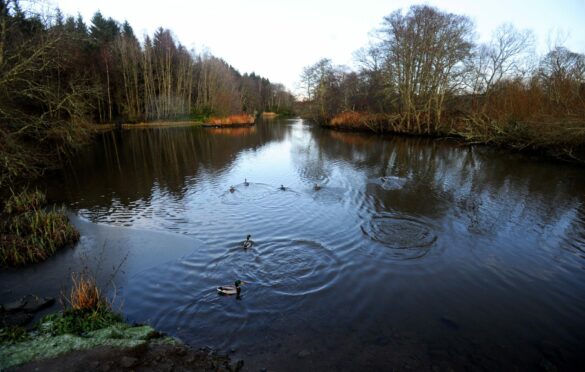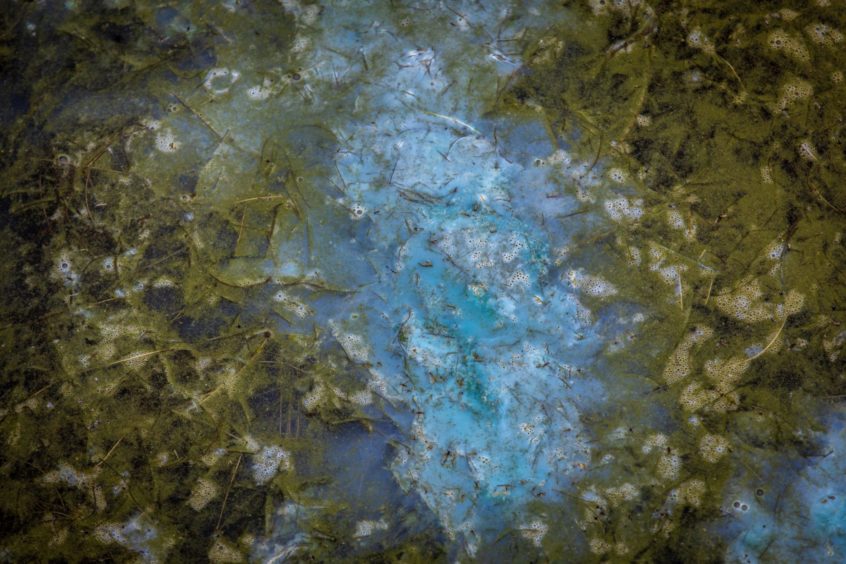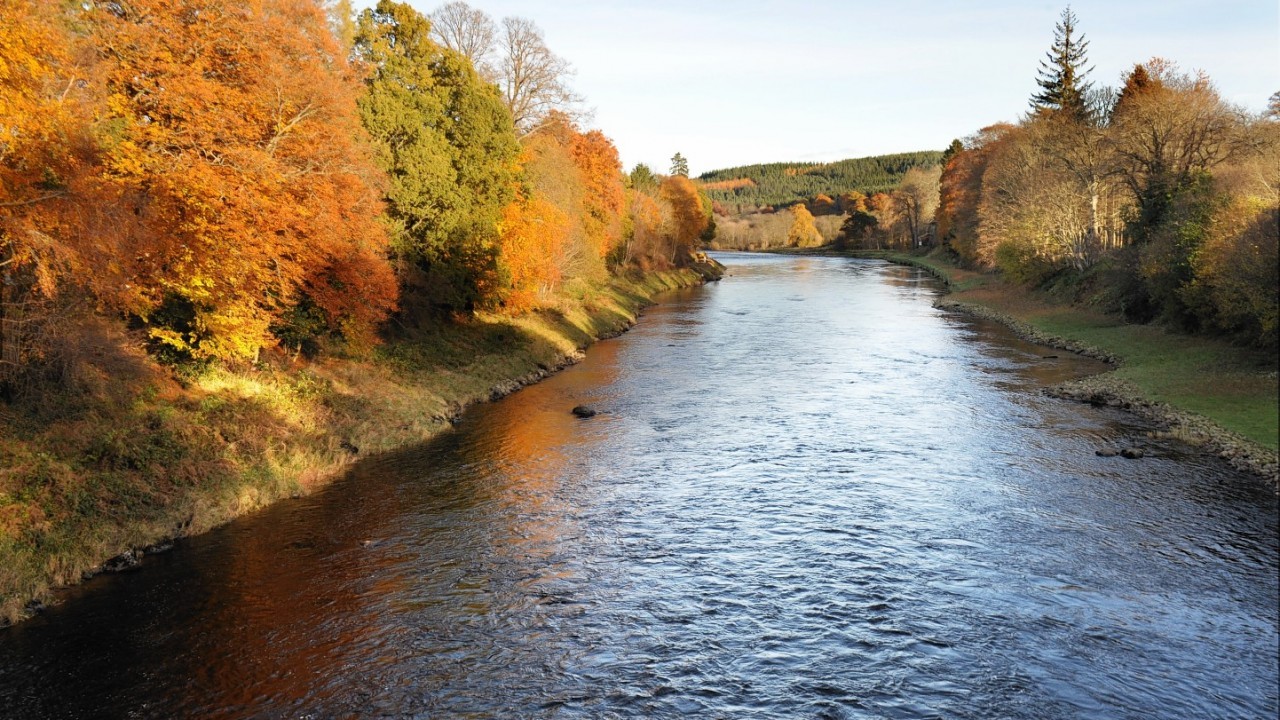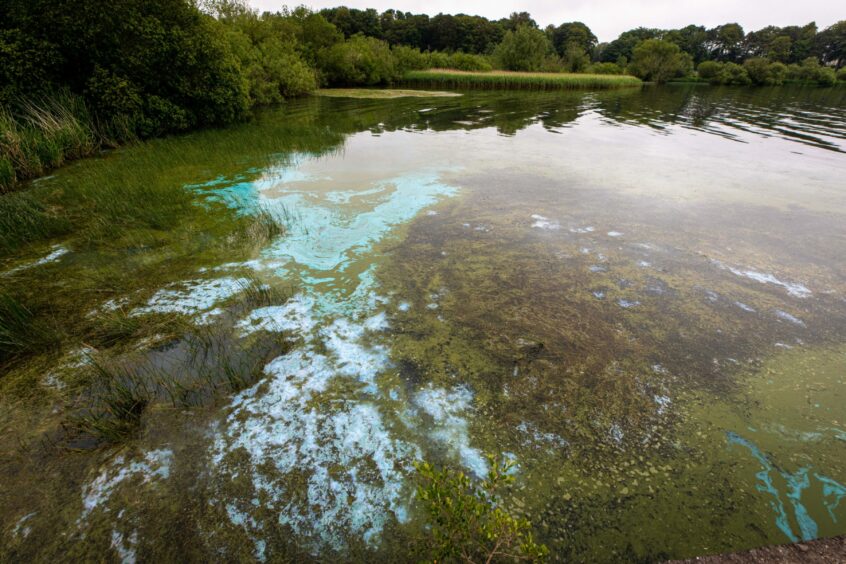Two dogs have died from suspected blue-green algae poisoning in the north-east.
Pet owners are now being encouraged to keep their pets on a lead in the area and away from the water.
Haddo House and Country Park were informed of a dog dying after visiting its lake, with the owner saying their pet had been exposed to blue-green algae.
The harmful algae has never been discovered at the site before, but the lake does have occasional algal blooms and blanket weed which can make the surface look green in colour.
As the team cannot “confirm nor deny” the presence of green-blue algae, they confirmed they will be getting the water tested and a report will be made to Sepa.
Meanwhile, Shetland Islands Council has confirmed the toxic algae has also been detected in Clickimin Loch in Lerwick.
‘Incredibly sad’
In a post shared on Facebook, the Haddo House team wrote: “We are naturally incredibly sad the dog died. We adore dogs at Haddo and take pride in providing everything they and their owners require for an enjoyable day out.
“Our heartfelt condolences go out to the owners of the dog, the loss of a furry best friend is crushing.”
There are water bowls for dogs at several locations around the historic house and park so they do not have to use the lake for drinking water.
Keeping dogs on leads at the park will also help protect the resident birds which nest on the ground around the lake.
Dog dies after playing in River Dee
Blue-green algae produces toxins which can be deadly to dogs, causing them to become ill very quickly.
It can kill dogs in minutes, according to The Kennel Club.
Those who survive can be left facing long-term health problems as a result.
The poisonous algae can be found in all aquatic environments, including lakes, streams and estuaries, and is most common when the weather is hot and water is still or stagnant.
It often appears as “green or blueish scum” on the surface which can clump and create foam on the shoreline.
Town and Country Veterinary Group, which has six branches around Aberdeen and Aberdeenshire, has also warned dog owners to “remain vigilant”.
The Banchory practice has shared another suspected case of blue-green algae poisoning which occurred in the River Dee on Friday.
Sadly, this young dog also died.
The young dog had been in the water in the Knappach area and arrived at the vets “collapsed, salivating, fitting and struggling to breath”.
The River Dee Trust has also shared advice about reporting possible blooms after receiving reports of blue-green algae being present in slow-flowing parts of the river.
Debbie Cooper, development and promotions officer, said: “There is normally algae in the river, but blue-green algae is the risk.
“There is no proof so far, but we’re trying to spread the word.”
‘Report it’
She has advised anyone who suspects blue-green algae is present in the River Dee, or any other location, to report it to Sepa or the UK Centre for Ecology and Hydrology’s Blooming Algae app.
“The best way to report is on the website or on Twitter. They are always monitoring their socials and will definitely pick it up from there.”
Shetland Islands Council has confirmed landowners and land users have been advised of the situation in Lerwick as have NHS Shetland, Shetland Recreational Trust, Anderson High School and Shetland Angling Association.
Warning signs have also been erected around Clickimin Loch.
A spokeswoman for Sepa said: “We are aware of potential instances of blue-green algae in Aberdeenshire. While blue-green algae is primarily a public health issue, Sepa works closely with local authorities and health boards, providing laboratory analysis of samples supplied by the local authority.
“Blue-green algae can be quite common in lochs and ponds during the warmer months. Blooms can sometimes be attributed to excessive nutrient enrichment but also occur as an entirely natural phenomenon. Although unlikely in rivers, in conditions of prolonged warm weather and low flow there is potential for it to grow in stagnant backwaters.
“People are advised not to touch anything that is suspected to be a bloom or allow children or pets to come into contact with water where blue-green algae may be present. If members of the public suspect blue-green algae, they should contact and follow advice provided by the local authority.”
What to do if you suspect poisoning
Symptoms can present within 15 minutes or up to an hour after exposure, and can include vomiting, twitching, seizures, diarrhoea, increased thirst, drooling, breathing difficulties or a collapse.
The PDSA is urging pet owners to “be vigilant” and avoid bright green areas of water “at all costs”.
Nina Downing, pet nurse for the PDSA, said: “Dogs are particularly at risk, as they are more likely to drink from ponds while out on a walk, or groom themselves after swimming in affected water.
“However – the more aware we are of the potential dangers, the better we can protect our precious four-legged friends.”
Owners must get their dog to a vet for treatment as soon as possible if they have symptoms.
They are advised to call the vets in advance, if possible, so they can be prepared to get to work upon arrival.
There is a good chance you may not be near your usual veterinary practice at the time. The nearest vet service can be found on the Royal College of Veterinary Surgeons website.




Conversation